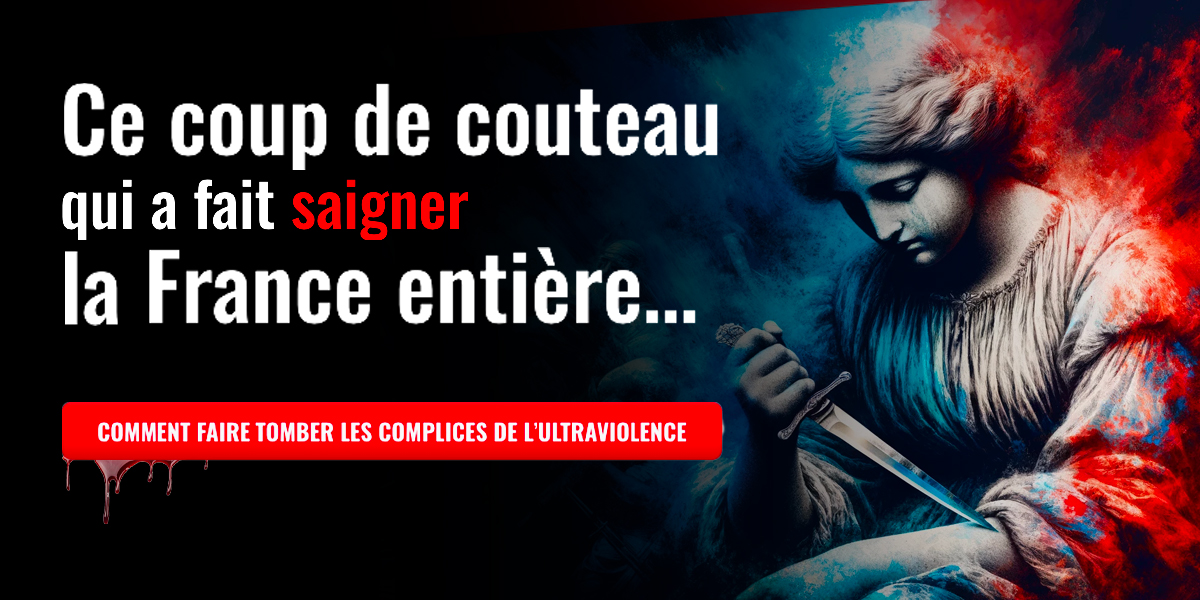17/10/17
Une spécialiste s’est penchée sur la question et apparemment Allah sur le vêtement viking c’est pas crédible. Le style d’écriture n’existait pas encore et ce n’est même pas vraiment ce qui est écrit
Dear Entire World: #Viking ‘Allah’ textile actually doesn't have Allah on it. Vikings had rich contacts w/Arab world. This textile? No. 1/60 pic.twitter.com/jpvbrrePQg
— Dr. Stephennie Mulder (@stephenniem) October 16, 2017
There is something very troubling here about relationship between news media & experts, who should have been consulted for verification 3/60
— Dr. Stephennie Mulder (@stephenniem) October 16, 2017
Here’s the deal with #Viking ‘Allah’ textile, as I have been able to piece it together over past few days. 5/60
— Dr. Stephennie Mulder (@stephenniem) October 16, 2017
It’s really so simple that I spent five days thinking, it couldn’t be that Larsson would make so fundamental and obvious a mistake. 7/60
— Dr. Stephennie Mulder (@stephenniem) October 16, 2017
It’s a style called square Kufic, and it’s common in Iran, C. Asia on architecture after 15th c., ex: Safavid Isfahan w/Allah and Ali 9/60 pic.twitter.com/pbGJNFITGk
— Dr. Stephennie Mulder (@stephenniem) October 16, 2017
Or the Minaret of Mas‘ud III at Ghazni, ca. 1099-1118, so all at least 100 years later than Birka textile h/t @2Kufic 11/60 pic.twitter.com/TTy6G0f6ix
— Dr. Stephennie Mulder (@stephenniem) October 16, 2017
Perhaps there are 10th c. 2Kufic examples on central Asian textiles. If so, I am not aware of them. Especially not w/hooked ‘ha.’ 13/60
— Dr. Stephennie Mulder (@stephenniem) October 16, 2017
2. But let’s assume there are 10th c. Central Asian textiles with 2Kufic. Even so, it turns out Larsson’s drawing doesn’t say ‘Allah’ 15/60
— Dr. Stephennie Mulder (@stephenniem) October 16, 2017
Arabic phrases like الحَمْد لله al-hamdulillah incorporate 'l-lah' but don’t stand alone, and it’s spelled لله with 2 uprights, not 3. 17/60
— Dr. Stephennie Mulder (@stephenniem) October 16, 2017
For ring, best conclusion is represents a kind of pseudo-Kufic. This tells us #Arabic was valued by #Vikings as social status/capital. 19/60
— Dr. Stephennie Mulder (@stephenniem) October 16, 2017
Or even real Arabic, for example dinar of Anglo-Saxon King Offa, who keeps Arabic Shahada intact as he inserts his name in the middle. 21/60 pic.twitter.com/Hm6VfNa6YX
— Dr. Stephennie Mulder (@stephenniem) October 16, 2017
Medieval Spanish textile expert Maria J. Feliciano confirmed to me that known square Kufic tablet weaves are post-13th c. 23/60
— Dr. Stephennie Mulder (@stephenniem) October 16, 2017
And a bit further north, not far from Paris, maniples w/2Kufic-like patterns from Chasuble of St Edmund, Provins, also 13th c. 25/60 pic.twitter.com/g6apRvsjTY
— Dr. Stephennie Mulder (@stephenniem) October 16, 2017
4. But the final nail in the coffin *cough* I mean burial ship is that Larsson’s claim is based on extrapolation, not evidence. 27/60
— Dr. Stephennie Mulder (@stephenniem) October 16, 2017
The word “Allah” in Arabic looks like this: الله. It has an upright alif, two more uprights (lam), and a final ـه 'ha' 29/60
— Dr. Stephennie Mulder (@stephenniem) October 16, 2017
There is a small triangular shape, but no final ha ـه. Frag. was published in 1938 by Agnes Geijer, original drawing looked like this: 31/60 pic.twitter.com/DxDossuWzs
— Dr. Stephennie Mulder (@stephenniem) October 16, 2017
These extensions practically double width of band. Not mentioned in press accounts: Larsson’s extensions are entirely conjectural. 33/60
— Dr. Stephennie Mulder (@stephenniem) October 16, 2017
A piece that was trimmed of proposed extensions would not have this finished selvage – it would show cut and tattered edge. 35/60
— Dr. Stephennie Mulder (@stephenniem) October 16, 2017
So if Larsson wants to stick with ‘Allah’ on her textile, it’s exclusively in the realm of supposition, not proof. 37/60
— Dr. Stephennie Mulder (@stephenniem) October 16, 2017
All Larsson’s got are three uprights connected by a horizontal band. This does not ‘Allah’ make. 39/60
— Dr. Stephennie Mulder (@stephenniem) October 16, 2017
#Charlottesville revealed to all what has long been known among medievalists: that #whitesupremacy uses medieval imagery & symbolism 41/60
— Dr. Stephennie Mulder (@stephenniem) October 16, 2017
/because #whitesupremacists need to believe #medieval era was a time when Europe was white. 43/60 https://t.co/ohIayFnWwD
— Dr. Stephennie Mulder (@stephenniem) October 16, 2017
#Viking contact w/wide range of outside peoples undisputed as C Downham of @IrishInstitute @LivUni has shown 45/60 https://t.co/w8qB65pdk3
— Dr. Stephennie Mulder (@stephenniem) October 16, 2017
And at #Birka in same boat grave as #Viking ‘Allah’ textile there were Arabic coins from Baghdad. 47/60
— Dr. Stephennie Mulder (@stephenniem) October 16, 2017
Crichton’s novel was made into a totally terrible but totally kitschawesome film #ThirteenthWarrior 49/60 pic.twitter.com/By4gDcg7at
— Dr. Stephennie Mulder (@stephenniem) October 16, 2017
So the #Viking Allah textile exhibits what Stephen Colbert @StephenAtHome once called ‘truthiness’ but is not supported by scholarship 51/60
— Dr. Stephennie Mulder (@stephenniem) October 16, 2017
I admire journalists immensely and am sympathetic to newsroom cutbacks that have made reporting more challenging 53/60
— Dr. Stephennie Mulder (@stephenniem) October 16, 2017
Or any of the @Metmuseum’s knowledgeable textile curatorial staff 55/60 https://t.co/YVIz2rmNtX
— Dr. Stephennie Mulder (@stephenniem) October 16, 2017
/& scholars like @jonathanhsy @jeffreyjcohen @dorothyk98 @Lollardfish are risking careers to fight #whitesupremacist appropriation 57/60
— Dr. Stephennie Mulder (@stephenniem) October 16, 2017
Then it matters that we get this right. Media can report on diversity of #GlobalMiddleAges w/out trumped-up scholarship @onthemedia 59/60
— Dr. Stephennie Mulder (@stephenniem) October 16, 2017
13/10/17
Des traces musulmanes aux confins de la Suède viking du 10ème siècle ? C’est l’extraordinaire découverte de chercheurs de l’université d’Uppsala (Suède) qui ont découvert les inscriptions “Allah” et “Ali” sur des tissus funéraires.
Comment interpréter ces inscriptions, retrouvées dans une centaine d’étoffes ? Les chercheurs ont plusieurs hypothèses. La première est qu’il peut y avoir des tombes musulmanes. Avant leurs incursions dans l’Europe du sud, les Vikings étaient connus pour être de grands commerçants, à l’époque où les Maures contrôlaient la méditerranée. Les échanges et rencontres entre les deux cultures étaient fréquents, si bien que de nombreuses sources historiques sur les Vikings viennent de voyageurs arabes.
L’autre hypothèse est l’influence culturelle reprise par les Vikings. Contrairement à la culture populaire, la religion des Vikings est très mal connue et il est fort possible que ce peuple ait repris les idées musulmanes sur le paradis et la vie après la mort. Une preuve que les Vikings, peuple encore très mystérieux, ont su construire une culture riche et diverse.
(…)
Merci à Lilib






